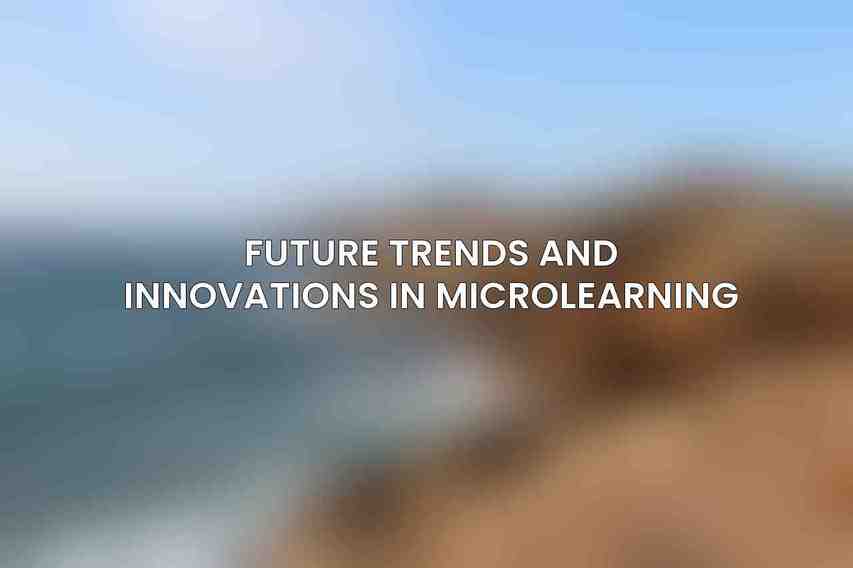microlearning has emerged as a powerful tool for delivering dynamic and engaging content to digital learners. this approach involves breaking down learning materials into bite-sized units that are easy to consume and retain. microlearning is significant for its ability to cater to the short attention spans of modern learners, providing immediate and relevant information. This methodology is rooted in cognitive science and learning principles, making it highly effective in enhancing knowledge retention and application.
One of the key benefits of microlearning is its capacity to engage learners more effectively compared to traditional methods. By offering content in short, focused segments, learners are more likely to stay motivated and absorb information efficiently. Moreover, the flexibility of microlearning enables students to access materials at their convenience, contributing to a personalized learning experience. Check this blog on 2024’s Latest E-Learning Technologies Unveiled
Alignment with Cognitive Science

Microlearning aligns with cognitive load theory, which posits that the human brain can only process a limited amount of information at a time. By breaking down content into smaller chunks, microlearning reduces cognitive overload, making it easier for learners to understand and retain information. This method also leverages spaced repetition, reinforcing learning through repeated exposure over time.
Best Practices for Creating Effective Microlearning Content
Creating effective microlearning content involves several best practices to ensure optimal learning outcomes. Some key strategies include:
Chunking Content
Breaking down information into digestible chunks helps learners focus on one concept at a time, enhancing comprehension and recall.
Variety of Formats
Utilizing diverse formats such as videos, infographics, and simulations caters to different learning styles, making the content more engaging and memorable.
Mobile Compatibility
Designing content that is mobile-friendly allows learners to access material anytime, anywhere, promoting convenience and flexibility.
Interactivity and Engagement
Incorporating features like quizzes, polls, and scenario-based activities encourages active participation and enhances the learning experience.
Tools for Developing Microlearning Content
To streamline the development of microlearning content, various tools and platforms are available to educators and instructional designers. These include:
| Category | Tools |
|---|---|
| eLearning Authoring | Articulate Storyline |
| Tools | Adobe Captivate |
| Video Creation Platforms | YouTube |
| Vimeo | |
| Infographic Creation | Canva |
| Tools | Piktochart |
| Simulation Development | Unity |
| Platforms | Unreal Engine |
These tools offer user-friendly interfaces and robust features to create engaging microlearning content across various formats.
Strategies for Implementing Microlearning in Digital Education
Implementing microlearning effectively requires strategic planning and integration with existing educational frameworks. Key strategies include:
Integration with Learning Systems
Integrating microlearning modules seamlessly into Learning Management Systems (LMS) ensures easy access for learners and streamlined content delivery.
Delivery through Multiple Channels
Distributing microlearning content through mobile apps, social media platforms, and websites increases accessibility and reach, catering to diverse learning preferences.
Tracking and Measurement
Utilizing analytics tools to track learner progress and engagement provides valuable insights for improving content and tailoring learning experiences.
Learner Participation
Encouraging interaction through discussions, collaborative activities, and peer feedback fosters a sense of community and enhances knowledge sharing among learners.
Case Studies of Microlearning in Practice
Real-world examples showcase the effectiveness of microlearning across different industries. Case studies demonstrate the impact of microlearning programs on employee training, knowledge retention, and skill development.
Healthcare Industry
Microlearning has been instrumental in providing just-in-time training to healthcare professionals, improving patient care and compliance with medical guidelines.
Technology Sector
Tech companies have embraced microlearning to upskill employees rapidly on new technologies, leading to enhanced productivity and innovation within the workforce. Read more about this on The Power of Analytics in E-Learning Check this blog on Adaptive Learning Systems: Personalizing Education
Education Field
Educational institutions have adopted microlearning to supplement classroom instruction and provide additional resources for students, catering to individual learning needs and preferences.
Future Trends and Innovations in Microlearning

As technology continues to advance, the future of microlearning holds exciting possibilities for enhanced learning experiences. Some emerging trends include:
Artificial Intelligence
Integrating AI for personalized learning paths and adaptive assessments enhances the customization of content based on individual learner needs.
Virtual and Augmented Reality
The integration of VR and AR technologies offers immersive learning experiences, making complex concepts more tangible and engaging for learners.
Gamification
Gamified microlearning programs motivate learners through reward systems, challenges, and competitive elements, increasing engagement and retention.
Convergence with Educational Technologies
Microlearning is expected to converge with other educational technologies such as machine learning, blockchain, and big data analytics, optimizing learning processes and outcomes.
the microlearning revolution represents a paradigm shift in digital education, offering a dynamic and effective way to deliver educational content to learners. With its proven benefits, alignment with cognitive science principles, and potential for innovation, microlearning is poised to shape the future of learning.
Embracing microlearning is not just a choice but a necessity for educators and organizations looking to stay relevant in this fast-paced digital world. By incorporating microlearning strategies, institutions can enhance learning outcomes, engage learners more effectively, and adapt to the evolving needs of 21st-century education.
As we move forward, the importance of microlearning will only continue to grow, making it essential for all stakeholders in the education sector to embrace this transformative approach and capitalize on its potential for improving learning experiences. Let’s pave the way for a future where microlearning revolutionizes education for the better.
Frequently Asked Questions
What is microlearning?
Microlearning is a teaching technique that involves delivering small, bite-sized pieces of information to learners, typically through digital platforms.
How does microlearning benefit digital education?
Microlearning allows for more flexible and personalized learning experiences, making it easier for learners to digest information quickly and retain it better.
What are some examples of microlearning in practice?
Examples of microlearning include short videos, quizzes, infographics, and interactive modules that can be accessed on computers, tablets, and smartphones.
How can educators implement microlearning in their teaching strategies?
Educators can incorporate microlearning by breaking down larger topics into smaller, more manageable chunks, and delivering them in a variety of engaging formats.
What are some challenges associated with the microlearning revolution?
Challenges include ensuring the quality and accuracy of microlearning content, adapting to the rapid pace of technological advancements, and addressing issues related to access and equity in digital education. You can find more information on Gamification: A Game Changer in E-Learning?

